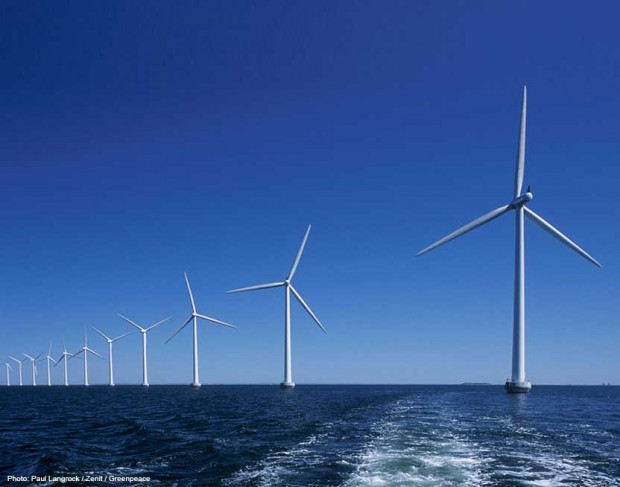Pop quiz. Who do you think said this at conference on wind energy I went to recently?
“We believe that offshore wind… will be the energy backbone for northern Europe.”
If you’re guessing it was the CEO from one of the big wind energy companies then I’m afraid you’re wrong. Or how about a government minister from a country that’s heavily investing in wind power? Wrong again!
It was actually an executive from Shell. Sounds difficult to believe, right? But trust me. It’s 100% true. And it’s yet more proof that renewable energy is big business.
The rate of progress is staggering. A couple of months ago, the world’s largest turbines were installed just off Liverpool. The blades are as long as nine double decker buses end to end. If the turbines were built on land, the whole structure would dwarf Liverpool’s Liver Building and the London Eye in height.
These turbines produce enormous amounts of electricity. Just one rotation produces enough to run an average British home for 29 hours.
Innovation has meant plummeting costs as the supply chain has been streamlined. In 2012, the British government set the offshore wind industry a target to reduce costs by a third. It was a target the wind industry met four years early, with costs falling 46% in the last 5 years — 22% in 2016 alone.
Meanwhile, in other countries across world, the solar industry is going from strength to strength. In 2016, solar power – the world’s largest clean energy employer – was putting 3.1 million people to work, up 12% from the year before.
Like the wind industry, solar is continually innovating too. Last year Tesla unveiled their solar roof tiles – a technology where solar panels are seamlessly integrated into roof tiles, making the solar panels look just like a normal roof.
With such staggering developments in wind and solar, countries are now competing to be the world’s first clean energy superpower. Earlier this year, Germany hit another milestone toward that goal when it produced around 80% of its electricity from renewable sources for a day — a feat it had already achieved in 2016, and 2015 too.
At the same time China, a country that is finally showing signs of shaking off its coal addiction, has pushed the boundaries of where renewables can be rolled out by recently switching on the world’s largest floating solar power plant.
But what about Britain? Is the country that once led the industrial revolution now at the forefront of a new revolution in clean energy?
The answer is – sadly not.
While huge wind turbines off the coast of Liverpool are something to be proud of, the UK is fast losing ground in the global race to a clean energy future.
In 2016, for the first time ever, the UK slipped out of the top ten countries for investment in renewables. Though we’ve now regained some ground, clawing back into 10th place, UK renewables investment remains poised to fall 95% over next three years.
Instead of making the most of the natural resource our island has been blessed with – like being surrounded by seas that could be used to generate power, and being the windiest country in Europe – right now the government is hell bent on pouring money into risky and expensive nuclear projects, like Hinkley, and backing fracking instead.
Brexit could mean further uncertainty. With EU negotiations now underway, some corners of the press and politics have begun using Brexit to attack renewable energy. One of the UK’s biggest newspapers even said we should “say up yours” to renewable energy goals – targets which have, in recent years, helped drive forward the growth of clean energy in the UK.
However you voted in the EU referendum – to leave or to remain – none of us voted to trash clean energy. So it’s shocking that some influential voices want to use Brexit to rein in Britain’s home grown clean energy sector, right at the moment other countries are ramping up plans for clean power — and reaping the benefits too.
That’s why this week Greenpeace has launched a new campaign to champion clean energy – a campaign for a clean powered UK.
In the coming months, we’ll be championing renewables, showcasing how clean technologies are changing the world, and sharing stories of the people who are driving forward the clean energy revolution. With your support, we’ll be piling pressure on the government to get far more ambitious on wind, solar, and other renewable technologies. And we’ll be showing that doing so would create jobs, help boost the economy, and help save the climate too.



